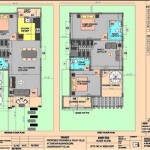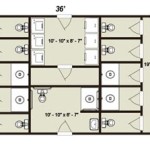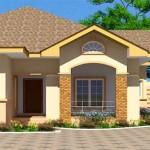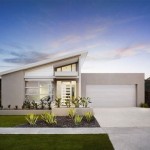Morocco House Plans Designs 2024: A Synthesis of Tradition and Modernity
Moroccan house plan designs have evolved significantly in recent years, reflecting a dynamic interplay between deeply rooted traditions and contemporary architectural trends. The year 2024 witnesses a continuation of this evolution, with designers pushing boundaries while remaining respectful of the cultural heritage that defines Moroccan aesthetics. This article explores the key elements influencing Morocco house plan designs in 2024, highlighting prevalent features, materials, and spatial configurations characteristic of this architectural style.
The enduring allure of Moroccan design stems from its ability to create spaces that are both functional and aesthetically pleasing. Common design elements include intricate geometric patterns, vibrant colors, natural materials, and an emphasis on privacy and indoor-outdoor living. These elements are now being seamlessly integrated with modern amenities and sustainable building practices, resulting in homes that are both beautiful and environmentally conscious.
Key Point 1: Enduring Architectural Elements in Modern Adaptations
Several core architectural elements continue to be central to Moroccan house plan designs in 2024. These elements, deeply embedded in the country's history and culture, provide a distinctive character and contribute to the overall ambiance of the homes.
One prominent feature is the riad, a traditional Moroccan house or palace with an interior courtyard or garden. In contemporary designs, the riad concept is often reinterpreted as a central open space, providing natural light and ventilation while acting as a focal point for the entire house. These courtyards often incorporate water features, lush greenery, and seating areas, creating a tranquil oasis within the home.
Another essential element is the use of arched doorways and windows. These arches, inspired by Islamic architecture, add a sense of elegance and sophistication to the design. They can range from simple rounded arches to more elaborate horseshoe or multi-lobed arches, depending on the overall design aesthetic. The incorporation of arched openings contributes to a sense of flow and continuity throughout the house.
Mashrabiya, intricately carved wooden screens, are also frequently used in modern Moroccan house designs. Traditionally used to provide privacy and shade, mashrabiya now serve as decorative elements, adding texture and visual interest to the facades and interiors. They allow for natural light while filtering harsh sunlight and maintaining a degree of privacy from the outside world. In 2024, designers are experimenting with new materials and patterns for mashrabiya, incorporating contemporary designs while preserving the traditional craftsmanship.
Geometric patterns, especially those derived from Islamic art, are ubiquitous in Moroccan design. These patterns are often found on walls, floors, ceilings, and decorative elements such as tiles and carpets. The intricate geometric designs add visual complexity and a sense of depth to the spaces. In 2024, designers are incorporating these patterns in more subtle and understated ways, creating a sophisticated and contemporary look.
Finally, the use of zellige, handmade mosaic tiles, remains a hallmark of Moroccan design. Zellige tiles are known for their vibrant colors, intricate patterns, and unique irregularities, adding a sense of authenticity and craftsmanship. They are often used to decorate floors, walls, and water features, creating stunning visual effects. Current trends showcase zellige in both traditional and modern applications, demonstrating its versatility and enduring appeal.
Key Point 2: The Harmonious Blend of Interior and Exterior Spaces
A defining feature of Moroccan house plan designs is the seamless integration of indoor and outdoor spaces. This emphasis on indoor-outdoor living reflects the importance of nature and the temperate climate of Morocco.
Courtyards and gardens play a crucial role in blurring the lines between inside and outside. These spaces are often designed as extensions of the living areas, with comfortable seating, dining areas, and outdoor kitchens. The courtyards provide a sheltered and private space for relaxation and entertainment, while gardens bring nature into the heart of the home.
Large windows and doors are strategically placed to maximize natural light and ventilation, creating a connection to the surrounding landscape. Floor-to-ceiling windows, sliding glass doors, and French doors are commonly used to open up the interiors to the outdoors. These openings allow for a free flow of air and create a sense of openness and spaciousness.
Roofs are often designed as terraces or rooftop gardens, providing additional outdoor living space. These terraces offer panoramic views of the surrounding landscape and are ideal for entertaining guests or simply relaxing in the sun. Rooftop gardens can also incorporate water features and lush vegetation, creating a tranquil oasis above the bustling city.
The use of natural materials, such as wood, stone, and stucco, further enhances the connection between the interior and exterior. These materials create a sense of warmth and texture, while also blending seamlessly with the natural environment. Outdoor spaces often incorporate these materials to create a cohesive and harmonious design.
The integration of water features, such as fountains and pools, is another key element in creating a seamless transition between indoor and outdoor spaces. The sound of flowing water adds a sense of tranquility and relaxation, while the water itself provides a cooling effect in the hot Moroccan climate. Water features are often incorporated into courtyards, gardens, and rooftop terraces, creating a refreshing and inviting atmosphere.
Key Point 3: Sustainable Practices and Modern Amenities
In 2024, Moroccan house plan designs are increasingly incorporating sustainable building practices and modern amenities, reflecting a growing awareness of environmental concerns and a desire for comfortable and efficient living.
Sustainable materials are being used extensively in the construction of Moroccan homes. Locally sourced materials, such as adobe, rammed earth, and stone, are favored for their low environmental impact and their ability to regulate temperature. Recycled materials, such as reclaimed wood and recycled glass, are also being incorporated into the designs.
Energy efficiency is a key consideration in modern Moroccan house plan designs. Passive solar design techniques, such as proper orientation, shading, and natural ventilation, are employed to minimize energy consumption. Solar panels are often installed on roofs to generate electricity, while rainwater harvesting systems are used to collect and reuse water for irrigation and other purposes.
Water conservation is another important aspect of sustainable design. Drought-tolerant landscaping is used to minimize water usage in gardens and outdoor spaces. Low-flow plumbing fixtures are installed in bathrooms and kitchens to reduce water consumption. Greywater recycling systems are also being implemented to reuse water from showers and sinks for irrigation.
Modern amenities are seamlessly integrated into traditional Moroccan house plan designs, providing residents with the comforts and conveniences of contemporary living. Smart home technology is being used to control lighting, temperature, and security systems. Modern kitchens and bathrooms are equipped with high-end appliances and fixtures. Entertainment systems, such as home theaters and sound systems, are also being incorporated into the designs.
The integration of modern amenities is carefully considered to ensure that they do not detract from the overall aesthetic of the home. The appliances and fixtures are often concealed or integrated into the design to create a seamless and uncluttered look. The use of natural materials and traditional craftsmanship helps to blend the modern amenities with the traditional elements of the design.
In conclusion, Moroccan house plan designs in 2024 represent a sophisticated blend of tradition and modernity. The enduring architectural elements, the harmonious integration of interior and exterior spaces, and the incorporation of sustainable practices and modern amenities all contribute to the unique and captivating character of these homes. The evolution of Moroccan house design reflects a deep appreciation for cultural heritage and a commitment to creating spaces that are both beautiful and functional for contemporary living.

Morocco House Plan Mediterranean One Story

Mediterranean House Plan Coastal Waterfront Style Home Floor

Moroccan House Plan 175 1052

Moroccan House Dubai Pencil On Trace Photo

Morocco House Plan Mediterranean One Story

House Plan Marrakesh Sater Design Collection

39 Touba Home Design Ideas In 2024 House Moroccan Interiors Architecture

Morocco Affordable Home Design With 4 Bedrooms Mojo Homes

Moroccan Interior Design

ديكور وأكثر On Twitter








